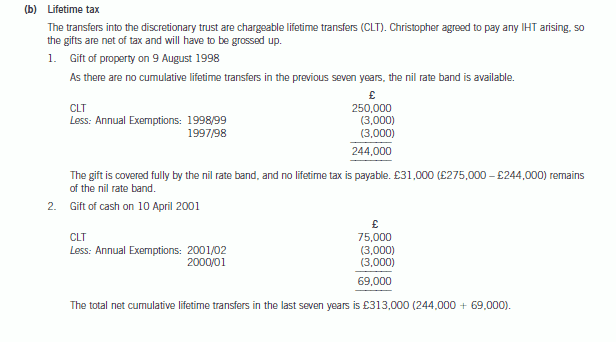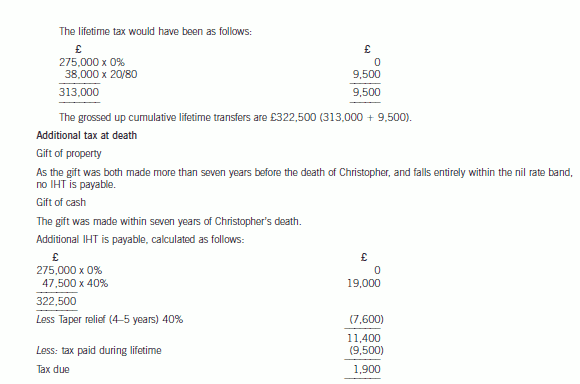ACCA考前抢分小技巧
发布时间:2021-06-25
考试将近相信大家都会遇到各种各样的问题,不用担心,这些问题是考前对考生意志的考验,也是对广大学员考证信心和坚持的历练,在面对这些问题时,我们该如何调整好自己的考试心态,将外界因素的影响降到最低呢?
ACCA答题技巧
选择题:
自机考改革后分数占比明显增多,对于选择题来说其实并无技巧可言,只要掌握了相应的知识和选择的方法一般并不会有问题。不过,为了要给后边的大题留有足够的时间,所以我们必须要控制在选择题当中所花的时间,这部分最好在90分钟之内。
大题:
按点给分,所以在算完一列或一行的数据后需要加总或扣减一些项目,我们最好采用“Sum(+/-)”的形式进行计算。这一来节省时间减轻了我们的计算量可以避免计算失误,二来因为是按点给分所以即使我们上面有数据计算错误,考官在点开每个表格数据的时候都能看到我们计算这个点的过程也会给相应的分数。
注意:在考试中,请大家尽可能使用数字表格中的公式完成复杂或者重复性的计算,也请带上自己的计算器以备不时之需。此外,尽管考会派发纸质草稿纸,建议大家直接将答案输入答题区,便于后期的调整和修改。
ACCA考试注意事项
1、认真审题,理清答题重点
在审题后,考生应注意如何有技巧的根据问题进行回答。尤其是在阐述知识点这一方面,一定要拎出最重要的对应知识点进行答题。可以短,但一定要是此题的精髓。再根据切入的知识点,展开自己的见解。
2、合理地分配考试时间
请考生们不要在某道题上花费太多的时间,迅速的阅卷之后,依照顺序答题。遇到难题可以先跳过,在答完整张试卷后,再回来揣摩。
3、学会有所取舍
对于真正的难题,关键时刻要果断地放弃,不要再一道题耽误太长的时间。如是会的题目,那就确认做到100%的正确率,实在不会的先跳过,不浪费时间。
4.坚定目标,绝不放弃
对于一些同学来说,今年可能是他第一次报考acca,初考就碰壁,换做谁遇到这种情况都会丧气。但是,正所谓好事多磨,既然认定acca,就不要轻易放弃。万事开头难,有时候坚持比幸运更重要,学到手的永远都是你自己的。可能你会因为一时不能参加考试打乱了计划而着急,但是,如果你直接放弃,可能今年你的学习就一无所获。与其这样,不如静下心好好专研,坚定自己的目标,不轻易放弃。
总而言之我们备考acca考试,心态,自我调节也是很重要的,合理规划好时间,敢于面对学习的困难,与其忧心忡忡担忧未来,不如脚踏实地做自己。调整好自己的备考心态,赢得考试。
下面小编为大家准备了 ACCA考试 的相关考题,供大家学习参考。
(c) State the tax consequences for both Glaikit Limited and Alasdair if he borrows money from the company, as
proposed, on 1 January 2006. (3 marks)
(c) Alasdair is not employed, nor is he a director, of Glaikit Limited. As he holds 25% of the shares in Glaikit Limited, he is a
participator in a close company and therefore the special close company provisions will apply. Thus Alsadair will be taxed
under the ‘loans to participator’ rules.
When the loan is written off, the amount waived will be treated as a gross distribution of £16,667 (£15,000 x 10/9). This
will be assessed in the tax year in which the loan is written off (expected to be 2006/07 or 2007/08). To the extent that this
additional income makes Alasdair a higher rate taxpayer in that year, he will have to pay additional income tax of 32·5% of
the gross amount, less the available 10% tax credit.
From the company’s perspective, Glaikit Limited will have to pay 25% of the net value of any loan made to Alasdair which
has not been repaid to the company (or written off) within nine months of the year end. As the loan will remain outstanding
as at 31 March 2006, Glaikit Limited will have to pay £3,750 (25% x £15,000) to the Revenue by 1 January 2007. This
amount will not be repaid until the loan is repaid or written off. This usually takes place nine months after the year end in
which the loan is written off, so Glaikit Limited should ensure that any write-off occurs prior to 31 March 2007, or else the
repayment may be delayed for up to one year.
As the loan is tax free, the Revenue may also seek to tax Alasdair under the beneficial loan rules. If the Revenue were to seek
an assessment in this manner, the value of the benefit would be calculated and taxed as a deemed distribution. However, as
Alasdair has no connection with the company other than as an investor, it is unlikely that the beneficial loan benefit will lead
to such a deemed distribution.
(b) Calculate the inheritance tax (IHT) liability arising as a result of Christopher’s death. (11 marks)



4 The International Accounting Standards Board (IASB) has begun a joint project to revisit its conceptual framework for
financial accounting and reporting. The goals of the project are to build on the existing frameworks and converge them
into a common framework.
Required:
(a) Discuss why there is a need to develop an agreed international conceptual framework and the extent to which
an agreed international conceptual framework can be used to resolve practical accounting issues.
(13 marks)
(a) The IASB wish their standards to be ‘principles-based’ and in order for this to be the case, the standards must be based on
fundamental concepts. These concepts need to constitute a framework which is sound, comprehensive and internally
consistent. Without agreement on a framework, standard setting is based upon the personal conceptual frameworks of the
individual standard setters which may change as the membership of the body changes and results in standards that are not
consistent with each other. Such a framework is designed not only to assist standard setters, but also preparers of financial
statements, auditors and users.
A common goal of the IASB is to converge their standards with national standard setters. The IASB will encounter difficulties
converging their standards if decisions are based on different frameworks. The IASB has been pursuing a number of projects
that are aimed at achieving short term convergence on certain issues with national standard setters as well as major projects
with them. Convergence will be difficult if there is no consistency in the underlying framework being used.
Frameworks differ in their authoritative status. The IASB’s Framework requires management to expressly consider the
Framework if no standard or interpretation specifically applies or deals with a similar and related issue. However, certain
frameworks have a lower standing. For example, entities are not required to consider the concepts embodied in certain
national frameworks in preparing financial statements. Thus the development of an agreed framework would eliminate
differences in the authoritative standing of conceptual frameworks and lead to greater consistency in financial statements
internationally.
The existing concepts within most frameworks are quite similar. However, these concepts need revising to reflect changes in
markets, business practices and the economic environment since the concepts were developed. The existing frameworks need
developing to reflect these changes and to fill gaps in the frameworks. For example, the IASB’s Framework does not contain
a definition of the reporting entity. An agreed international framework could deal with this problem, especially if priority was
given to the issues likely to give short-term standard setting benefits.
Many standard setting bodies attempted initially to resolve accounting and reporting problems by developing accounting
standards without an accepted theoretical frame. of reference. The result has been inconsistency in the development of
standards both nationally and internationally. The frameworks were developed when several of their current standards were
in existence. In the absence of an agreed conceptual framework the same theoretical issues are revisited on several occasions
by standard setters. The result is inconsistencies and incompatible concepts. Examples of this are substance over form. and
matching versus prudence. Some standard setters such as the IASB permit two methods of accounting for the same set of
circumstances. An example is the accounting for joint ventures where the equity method and proportionate consolidation are
allowed.
Additionally there have been differences in the way that standard setters have practically used the principles in the framework.
Some national standard setters have produced a large number of highly detailed accounting rules with less emphasis on
general principles. A robust framework might reduce the need for detailed rules although some companies operate in a
different legal and statutory context than other entities. It is important that a framework must result in standards that account
appropriately for actual business practice.
An agreed framework will not solve all accounting issues, nor will it obviate the need for judgement to be exercised in resolving
accounting issues. It can provide a framework within which those judgements can be made.
A framework provides standard setters with both a foundation for setting standards, and concepts to use as tools for resolving
accounting and reporting issues. A framework provides a basic reasoning on which to consider the merits of alternatives. It
does not provide all the answers, but narrows the range of alternatives to be considered by eliminating some that are
inconsistent with it. It, thereby, contributes to greater efficiency in the standard setting process by avoiding the necessity of
having to redebate fundamental issues and facilitates any debate about specific technical issues. A framework should also
reduce political pressures in making accounting judgements. The use of a framework reduces the influence of personal biases
in accounting decisions.
However, concepts statements are by their nature very general and theoretical in their wording, which leads to alternative
conclusions being drawn. Whilst individual standards should be consistent with the Framework, in the absence of a specific
standard, it does not follow that concepts will provide practical solutions. IAS8 ‘Accounting Policies, Changes in Accounting
Estimates and Errors’ sets out a hierarchy of authoritative guidance that should be considered in the absence of a standard.
In this case, management can use its judgement in developing and applying an accounting policy, albeit by considering the
IASB framework, but can also use accounting standards issued by other bodies. Thus an international framework may nottotally provide solutions to practical accounting problems.
(ii) Explain the accounting treatment under IAS39 of the loan to Bromwich in the financial statements of
Ambush for the year ended 30 November 2005. (4 marks)
(ii) There is objective evidence of impairment because of the financial difficulties and reorganisation of Bromwich. The
impairment loss on the loan will be calculated by discounting the estimated future cash flows. The future cash flows
will be $100,000 on 30 November 2007. This will be discounted at an effective interest rate of 8% to give a present
value of $85,733. The loan will, therefore, be impaired by ($200,000 – $85,733) i.e. $114,267.
(Note: IAS 39 requires accrual of interest on impaired loans at the original effective interest rate. In the year to
30 November 2006 interest of 8% of $85,733 i.e. $6,859 would be accrued.)
声明:本文内容由互联网用户自发贡献自行上传,本网站不拥有所有权,未作人工编辑处理,也不承担相关法律责任。如果您发现有涉嫌版权的内容,欢迎发送邮件至:contact@51tk.com 进行举报,并提供相关证据,工作人员会在5个工作日内联系你,一经查实,本站将立刻删除涉嫌侵权内容。
- 2020-01-10
- 2020-05-20
- 2020-01-09
- 2020-01-10
- 2020-04-16
- 2020-02-07
- 2020-03-29
- 2020-01-10
- 2020-05-15
- 2020-02-18
- 2020-01-10
- 2020-05-10
- 2020-02-19
- 2021-01-06
- 2020-01-10
- 2020-01-09
- 2020-01-09
- 2019-07-28
- 2020-01-01
- 2020-01-10
- 2020-05-17
- 2020-04-23
- 2020-01-09
- 2020-05-05
- 2020-01-10
- 2020-01-09
- 2020-01-15
- 2020-04-20
- 2020-05-03
- 2020-04-09